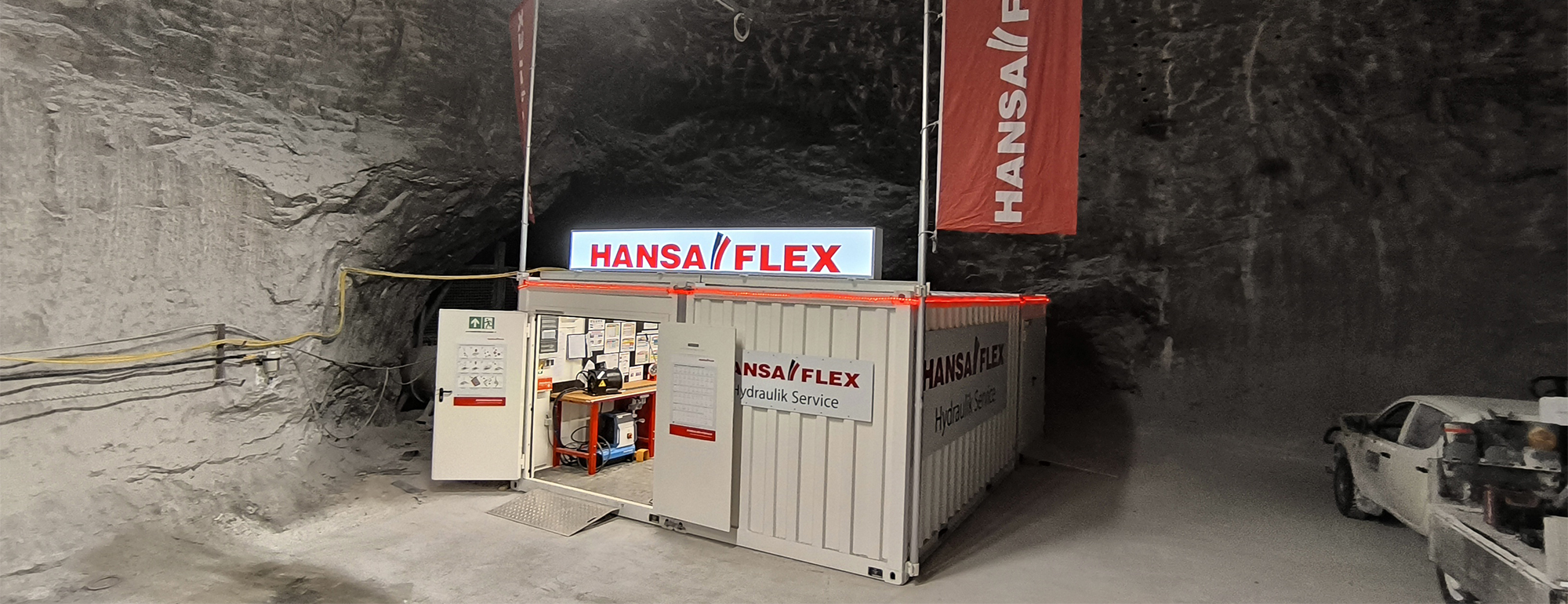
Our route into the depths of the Wismut adit takes us down the ramp. This is wide enough for use by a dump truck, which transports tailings to the surface. With a 16 per cent gradient, my legs pretty much take me down the slope of their own accord. Once in the adit, I am amazed at the sheer dimensions. The adit profile is 3.5 by 3.5 metres and wide enough for the vehicles used to pass by each other. We first head several hundred metres to the east, following the rails along which the wagons (known as ‘tubs’) transport the rock to a lifting and tilting device.

In 1998, a framework agreement was entered into between Wismut GmbH and HANSA‑FLEX, which has since been continually extended and, in part, expanded. The nearby branches supply Wismut with the spare hose lines for its many different projects. The mobile rapid hydraulic service vehicles are available for emergencies.
The HANSA‑FLEX branch in Heidenau fulfils all the needs that arise in relation to work on the Wismut adit. “We supply a broad range of products, from pre-assembled hose lines through industrial hoses and services from the mobile rapid hydraulic service to cylinder repair”, summarised HANSA‑FLEX field sales technician Jürgen Rüger. Often, the customer needs to receive spare part orders the very next morning. “We are delighted to have found a service provider that responds quickly when we need help. That is important as we are working to a tight schedule and cannot afford periods of downtime. The fact that HANSA‑FLEX can also repair cylinders for us is a further plus point”, stated Volkmar Lachmann in praise of the working relationship.
After the tour, we head back up above ground. The 16 per cent gradient is certainly hard on the legs. The visit was both strenuous and interesting – and most definitely gave me huge amounts of extra respect for the miners. Good luck!




